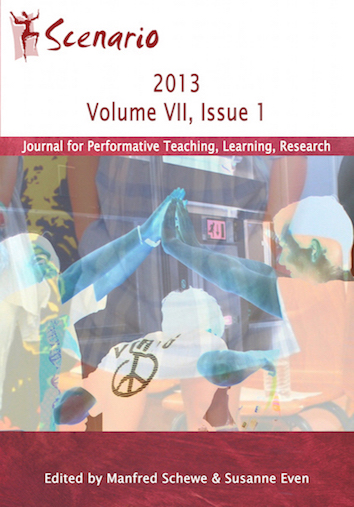Radio role-play – the use of a simulated radio studio in TEFL
DOI:
https://doi.org/10.33178/scenario.7.1.3Abstract
This paper aims to present a particular role-play technique called radio role-play developed specifically for the use in ELT classrooms. The technique is defined within the context of drama education and language teaching, and characterized in terms of its unique features. Practical examples from teaching practice are provided. Any kind of teaching material (text/recording) can serve as an input for radio role-play. The content is contextualized within the fictional broadcast studio as the students take on roles of a host and their guest(s) – usually characters from the textbook articles, recordings, or any other teaching material. The setting of a radio studio is unique in terms of its close relation to a real studio setting – sitting down at a table, facing the partner, possible use of microphones, jingles, soundscapes, etc. At the same time the setting provides protection, a sense of anonymity and safety, which results in high engagement levels. In practice, the radio role-play is organized as pair or group work, and the tasks are performed simultaneously. The outcomes of preliminary qualitative research (probe) carried out with high-school students aged 17-18 at B2 level are presented.Downloads
Veröffentlicht
2013-01-01
Ausgabe
Rubrik
Artikel
Lizenz
Copyright (c) 2013 the author(s)

Dieses Werk steht unter der Lizenz Creative Commons Namensnennung - Nicht-kommerziell - Keine Bearbeitungen 4.0 International.
Zitationsvorschlag
Zdarek, K. (2013). Radio role-play – the use of a simulated radio studio in TEFL. Scenario: A Journal of Performative Teaching, Learning, Research, 7(1), 24-39. https://doi.org/10.33178/scenario.7.1.3







